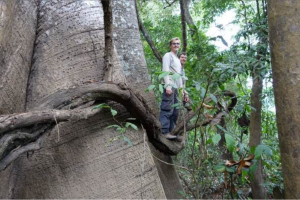The domestication of Amazon rainforests by pre-Columbian societies
Lead Supervisor: Francis Mayle, Department of Geography & Environmental Science, University of Reading.
Email: f.mayle@reading.ac.uk
Application details: http://www.met.reading.ac.uk/nercdtp/home/available/
Video: https://www.youtube.com/watch?v=JOqdGeNe4L0
Co-supervisors: Joy Singarayer, Department of Meteorology, University of Reading; Richard Walters, Department of Biological Sciences, University of Reading.
Background:
The extent to which pre-Columbian (pre-AD1492) human societies transformed Amazonia from a virgin wilderness into a domesticated landscape is one of the most contentious debates in tropical ecology. The old paradigm of Amazonia as a pristine wilderness, little impacted by millennia of human occupation, has been challenged in recent years by remarkable discoveries of monumental earthworks across much of southern Amazonia. However, although it is clear that these ancient ‘earthmoving’ societies transformed their physical landscape, the extent to which they also domesticated their forests – e.g. via burning, deforestation, agroforestry – is highly contentious. The degree to which the biodiversity of Amazonian rainforests was shaped by millennia of human land use is highly relevant for understanding current patterns of biodiversity, rainforest resilience and land-use sustainability.
The overall aim of this project is to determine the impact of Pre-Columbian societies upon Bolivian Amazonian rainforests – with respect to scale of deforestation, use of fire, and enrichment of forests with economically useful species.
This project focuses on the monumental mound region of Amazonian Bolivia – a mosaic landscape of rainforests and seasonally-flooded savannas. A dual data-modelling approach will be undertaken by the student:
a)Palaeoecology– fossil pollen and charcoal will be analysed from lake-sediment cores to reconstruct local- and regional-scale histories of pre-Columbian forest impact over the last 2,000 years; i.e. scale of forest clearance and type of forest management (e.g. agroforestry, fire) associated with this mound-building culture.
b) Modelling–an agent-based model will be developed (using NetLogo) to provide insights into the process by which this ancient culture domesticated these rainforests, and the extent to which a legacy of this ancient land use exists in today’s forests. The student will parameterize the model using their palaeoecological data, together with previously published palaeoecological, archaeological and anthropological data, as well as floristic data from the RAINFOR ecological plot network.
Training opportunities:
Training in field- and lab-based palaeoecological techniques will be provided by Mayle, which will include a 4-week fieldtrip to the Bolivian Amazon. Training in agent-based modelling will be provided by Singarayer and Walters. Further training may be acquired via relevant NERC Advanced Training Short courses if need be.
Student profile:
At least a 2.1 BSc degree in biology/geography/environmental science is required. A strong background in numerical/statistical techniques is essential. Knowledge of ecology and microscopy would be advantageous.



